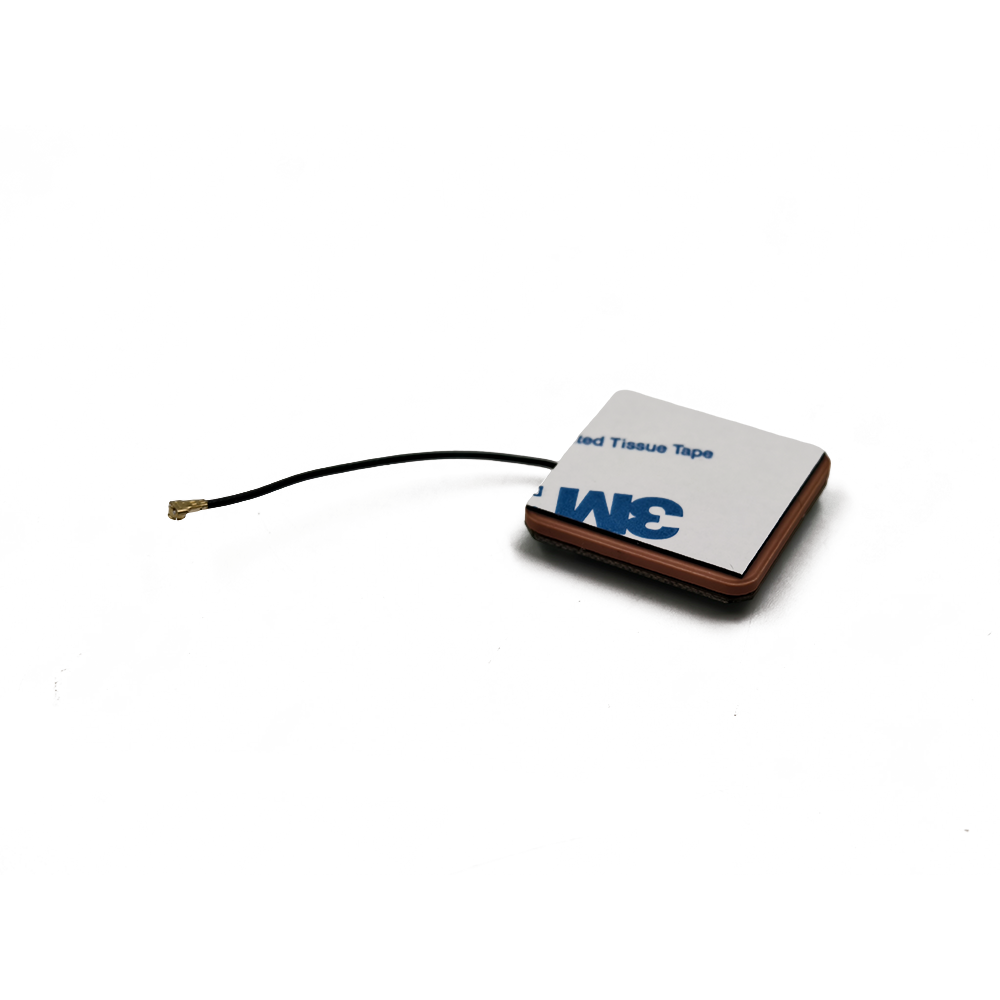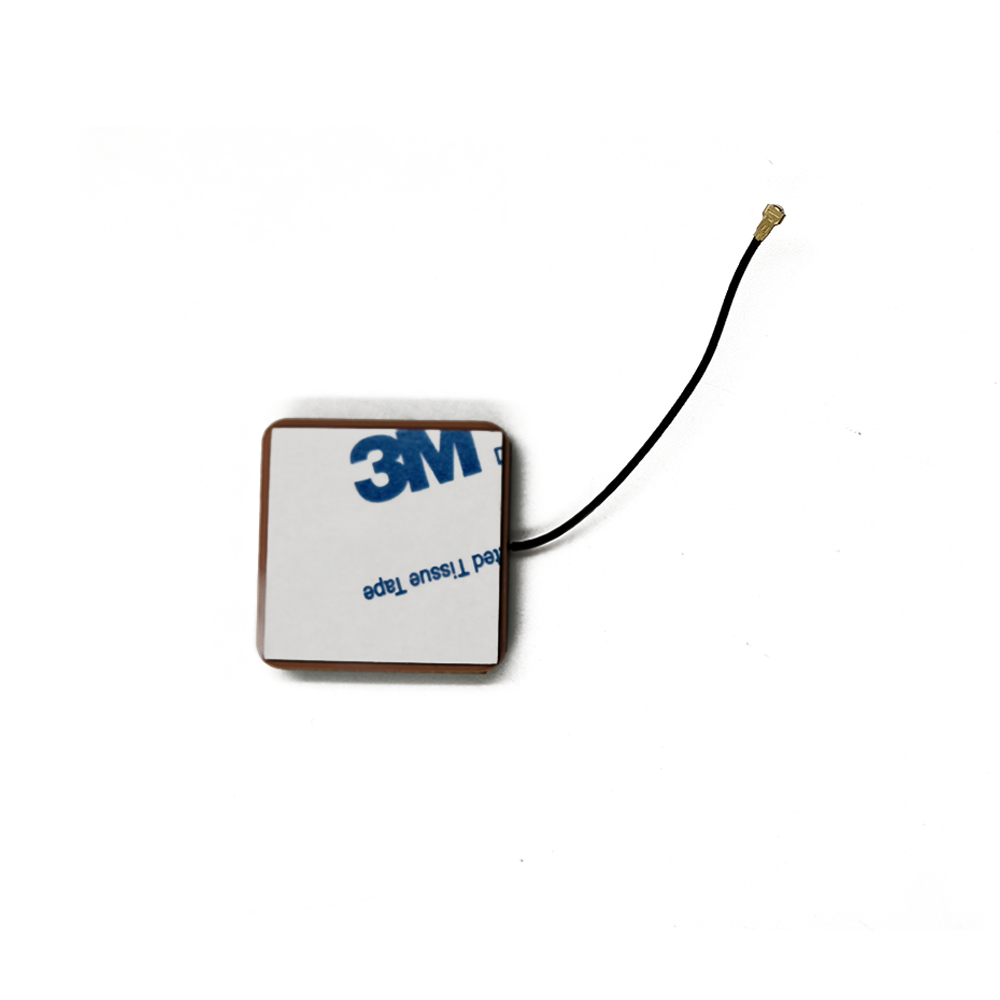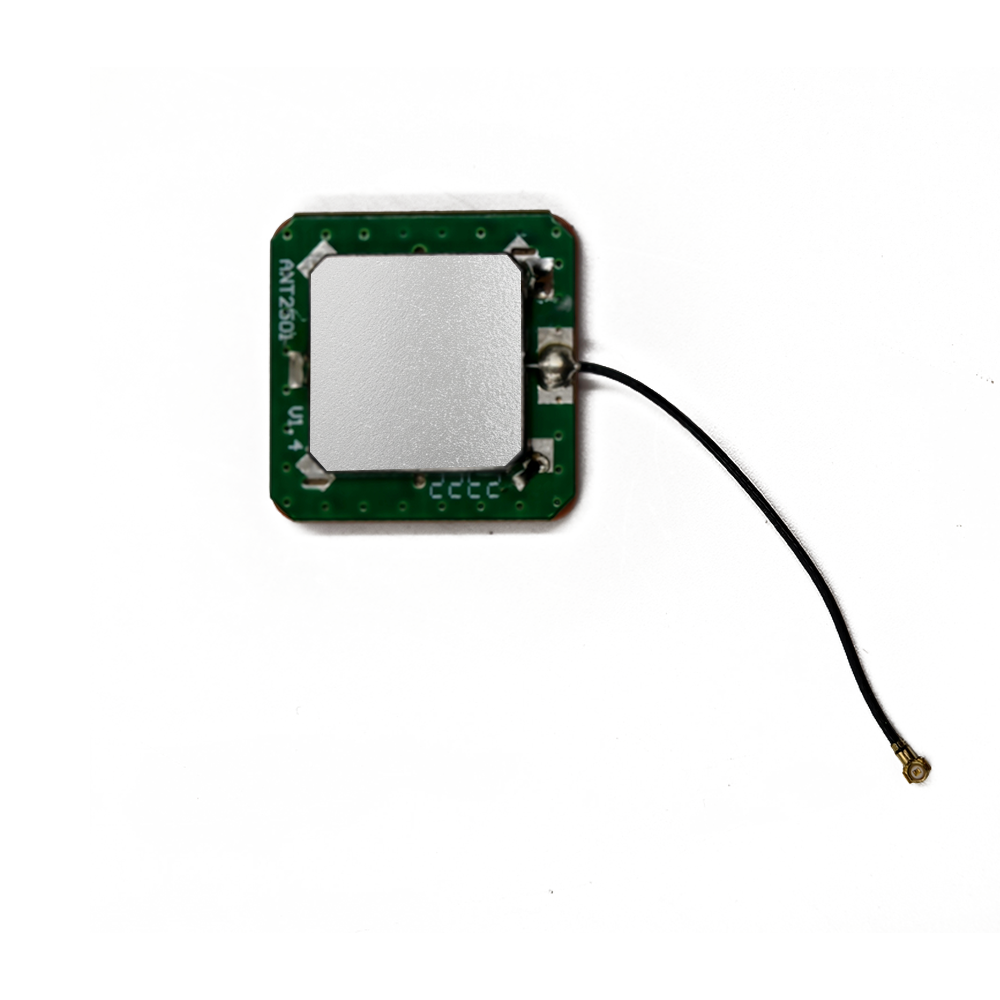What is a GNSS Active Antenna?
A GNSS active antenna is a specialized device designed to receive signals from multiple global navigation satellite systems—such as GPS, GLONASS, Galileo, and BeiDou—and incorporate an internal amplifier to strengthen the captured signals. The key distinction between active and passive antennas lies in the presence of a Low - Noise Amplifier (LNA), which is integrated into the antenna assembly. This amplifier acts as a signal booster, amplifying weak satellite signals before they are transmitted through cables to the GNSS receiver. This amplification is crucial because satellite signals weaken significantly as they travel through the Earth's atmosphere, often arriving at the antenna with very low power levels—typically around -130 dBm to -160 dBm.
GNSS active antennas are engineered to operate across specific frequency bands used by navigation satellites, such as the L1 band (1575.42 MHz for GPS), L2 band (1227.60 MHz), and L5 band (1176.45 MHz). Many modern active antennas support multiple bands, enabling compatibility with diverse satellite constellations and enhancing positioning accuracy. They are widely used in applications ranging from automotive navigation and surveying to drones and IoT devices, where reliable signal reception is essential.
Design and Components of GNSS Active Antennas
Core Components
A GNSS active antenna comprises several key components working in tandem to ensure optimal signal reception and amplification:
Radiating Element: This is the part of the antenna that captures incoming GNSS signals. It is typically a planar patch made from conductive materials like copper or silver, mounted on a dielectric substrate (such as ceramic or fiberglass). The radiating element is designed to resonate at the target GNSS frequencies, maximizing its ability to absorb electromagnetic energy from satellites. Ceramic substrates are commonly used for their high dielectric constant, which allows for compact designs without sacrificing signal - capturing efficiency.
Low - Noise Amplifier (LNA): The LNA is the defining component of an active antenna. Positioned close to the radiating element, it amplifies the weak received signals while introducing minimal additional noise. This is critical because amplifying noise along with the signal would degrade performance. LNAs in GNSS active antennas are designed with a low noise figure (typically between 0.5 dB and 2 dB), ensuring that the amplified signal remains clean and usable. The LNA is powered via a direct current (DC) feed, often supplied through the same coaxial cable that carries the amplified signal to the receiver—a configuration known as "bias - tee."
Filtering Circuitry: To prevent interference from unwanted signals (such as those from cellular networks, Wi - Fi, or other radio transmitters), active antennas include band - pass filters. These filters allow only the desired GNSS frequencies to pass through to the LNA, blocking out-of-band interference. For multi - band active antennas, multiple filters are used to isolate different frequency bands, ensuring that each band's signal is processed without cross - interference.
Ground Plane: A conductive layer (usually metal) that serves as a reference for the radiating element. The ground plane helps shape the antenna's radiation pattern, focusing it upward toward the sky to maximize satellite signal reception. It also acts as a shield, reducing electromagnetic interference from nearby electronic components. The size and design of the ground plane are optimized to complement the radiating element, enhancing overall antenna efficiency.
Enclosure: The outer casing protects the internal components from environmental factors such as moisture, dust, temperature extremes, and physical damage. Enclosures are often made from rugged materials like plastic or metal, with weatherproofing features (such as IP67 ratings) for outdoor applications. The enclosure's design may also include a radome—a transparent cover that allows RF signals to pass through while providing protection.
Design Considerations
Designing a GNSS active antenna requires balancing multiple factors to achieve optimal performance:
Frequency Band Support: The antenna must be tuned to the specific GNSS bands required by the application. Single - band antennas (e.g., L1 only) are simpler and more cost - effective, while multi - band antennas (e.g., L1/L5) offer better accuracy by leveraging signals from multiple frequencies to mitigate atmospheric errors.
Gain and Radiation Pattern: The antenna's gain (a measure of its ability to focus energy in a specific direction) and radiation pattern are critical for performance. Active antennas typically have a gain between 20 dB and 30 dB (including LNA amplification). The radiation pattern is often hemispherical, ensuring coverage of the sky where satellites are located. For applications like drones or automotive navigation, a wide - angle radiation pattern is preferred to maintain signal reception even when the antenna is tilted.
Power Consumption: While the LNA consumes relatively little power (typically 5 mA to 30 mA), minimizing power usage is important for battery - powered devices such as portable GPS units or IoT sensors. Designers optimize the LNA and associated circuitry to reduce power consumption without compromising noise performance.
Size and Form Factor: Active antennas are available in various sizes, from compact designs for embedded applications (e.g., 20 mm × 20 mm) to larger, high - gain models for outdoor use. The form factor is tailored to the application—for example, low - profile antennas for automotive dashboards or rugged, pole - mountable antennas for surveying equipment.
Working Principles of GNSS Active Antennas
The operation of a GNSS active antenna involves a sequence of steps that transform weak satellite signals into usable data for the receiver:
Signal Capture: The radiating element intercepts electromagnetic signals transmitted by GNSS satellites. These signals, traveling at the speed of light, carry timing and orbital data that the receiver uses to calculate position. The radiating element's design ensures that it efficiently captures signals within its target frequency bands.
Amplification: The weak signals from the radiating element are fed into the LNA, which amplifies them by 20–30 dB. This amplification is necessary because the signal strength is too low to be processed directly by the receiver, especially after losses in the coaxial cable connecting the antenna to the receiver. The LNA's low noise figure ensures that the amplified signal retains a high signal - to - noise ratio (SNR), which is essential for accurate positioning.
Filtering: After amplification, the signal passes through band - pass filters that remove unwanted frequencies and interference. This step ensures that only the desired GNSS signals are sent to the receiver, reducing the risk of signal corruption.
Signal Transmission: The filtered and amplified signal is transmitted through a coaxial cable to the GNSS receiver. In most cases, the same cable provides DC power to the LNA via a bias - tee circuit, eliminating the need for a separate power cable.
Receiver Processing: The receiver processes the amplified signal to extract timing and satellite position data, using this information to compute the antenna's (and thus the device's) location via trilateration.
The key advantage of this process is that amplification occurs close to the antenna, minimizing signal loss in the cable. In passive antennas, signals weaken as they travel through the cable, reducing the SNR at the receiver. Active antennas overcome this by boosting the signal early in the chain, ensuring that the receiver receives a strong, clean signal.
Advantages of GNSS Active Antennas
Enhanced Signal Strength and Sensitivity
The primary advantage of GNSS active antennas is their ability to amplify weak signals, making them highly sensitive to even the faintest satellite transmissions. This is particularly valuable in challenging environments such as urban canyons (where buildings block or reflect signals), dense foliage, or indoors (where signals are attenuated by walls and roofs). In such scenarios, passive antennas may fail to detect enough satellites for reliable positioning, while active antennas can capture and amplify weak signals, maintaining a stable position fix.
Reduced Signal Loss in Cable Transmission
Signal loss in coaxial cables increases with length and frequency. For applications where the antenna is mounted far from the receiver (e.g., a roof - mounted antenna connected to a dashboard receiver in a car), passive antennas would suffer significant signal degradation. Active antennas, by amplifying the signal at the antenna end, compensate for cable losses, ensuring that the receiver receives a strong signal regardless of cable length. This makes active antennas ideal for installations requiring long cable runs.
Better Performance in Interference - Prone Environments
The integrated filtering circuitry in active antennas reduces the impact of unwanted interference. By blocking out-of-band signals, the antenna ensures that the LNA amplifies only the desired GNSS frequencies, maintaining a high SNR. This is crucial in urban areas or industrial environments, where radio frequency interference (RFI) from other devices is common. Active antennas are thus more robust than passive antennas in noisy electromagnetic environments.
Support for Multi - Band and Multi - Constellation Systems
Modern GNSS active antennas often support multiple frequency bands and satellite constellations. By receiving signals from GPS, GLONASS, Galileo, and BeiDou across bands like L1, L2, and L5, these antennas provide more data points for the receiver to process. This improves positioning accuracy and reliability, as the receiver can leverage signals from more satellites, reducing the impact of individual satellite errors or signal blockages. For example, using L1 and L5 bands allows for better correction of ionospheric delays, a major source of positioning error.
Versatility in Installation
Active antennas offer greater flexibility in installation compared to passive antennas. Their ability to tolerate longer cable runs means they can be mounted in optimal locations (e.g., on a vehicle roof or a tall pole) to maximize sky visibility, even if the receiver is far away. This is especially beneficial in applications like marine navigation, where the antenna is mounted on the mast for unobstructed sky view, while the receiver is located in the cabin.
Applications of GNSS Active Antennas
Automotive and Transportation
In the automotive industry, GNSS active antennas are used in navigation systems, telematics, and advanced driver - assistance systems (ADAS). Vehicle navigation systems rely on active antennas to maintain signal reception in urban areas, ensuring accurate turn - by - turn directions. Telematics devices use them for fleet tracking, stolen vehicle recovery, and driver behavior monitoring, requiring reliable positioning even in remote areas. ADAS, such as adaptive cruise control and lane - keeping assist, depend on high - precision positioning from active antennas to function safely, especially in complex traffic environments.
Surveying and Geomatics
Surveying and geomatics applications demand centimeter - level positioning accuracy, which is achieved using GNSS active antennas paired with precision receivers. These antennas are mounted on surveying poles or tripods, capturing signals from multiple GNSS constellations and bands. The LNA's low noise amplification ensures that even weak signals (e.g., in forested areas) are usable, while multi - band support allows for precise correction of atmospheric errors. Active antennas are essential for applications such as land surveying, construction site layout, and mapping.
Marine and Aviation
Marine navigation relies on GNSS active antennas to provide accurate positioning in open seas, coastal areas, and harbors. These antennas are designed to withstand harsh marine environments, with waterproof enclosures and resistance to salt spray. They ensure reliable signal reception even in rough weather, enabling safe navigation and collision avoidance. In aviation, active antennas are used in aircraft navigation systems, providing precise positioning for en - route flight, approach, and landing. Their high sensitivity and interference rejection are critical for aviation safety, where signal loss could have catastrophic consequences.
Drones and Unmanned Aerial Vehicles (UAVs)
Drones and UAVs use GNSS active antennas for navigation, waypoint tracking, and stable flight. Compact active antennas are integrated into the drone's body, providing reliable positioning without adding excessive weight. In commercial drones used for aerial photography, mapping, or inspection, active antennas ensure precise hover control and accurate path following, even in areas with partial signal blockage (e.g., near buildings or trees). For long - range drones, active antennas with high gain help maintain signal reception at extended distances from the operator.
Internet of Things (IoT) and Asset Tracking
IoT devices and asset trackers use GNSS active antennas to provide location data for logistics, supply chain management, and remote monitoring. These antennas are often compact and low - power, suitable for integration into small devices attached to packages, vehicles, or equipment. Active antennas ensure that trackers can receive signals even when hidden (e.g., inside a shipping container) or in urban environments, providing real - time location updates. Low - power LNAs extend battery life, making them ideal for long - term deployments.
Agriculture and Precision Farming
In precision agriculture, GNSS active antennas guide autonomous tractors, harvesters, and drones, enabling precise planting, fertilizing, and harvesting. These antennas provide sub - meter or centimeter - level accuracy, ensuring that farm equipment follows predefined paths with minimal overlap, reducing waste and improving efficiency. Active antennas perform reliably in rural areas, where signal strength may vary due to terrain or foliage, ensuring consistent operation throughout the farm.
Challenges and Limitations
Power Dependency
GNSS active antennas require a power source to operate the LNA, unlike passive antennas, which are entirely passive. This dependency can be a limitation in battery - powered devices, where power consumption is critical. While modern LNAs are designed to be energy - efficient, the need for a power supply adds complexity to installation—either via a bias - tee in the cable or a separate power source. In remote applications with limited power, this can be a challenge, though low - power designs have mitigated this issue in recent years.
Cost
Active antennas are generally more expensive than passive antennas due to the inclusion of an LNA, filtering circuitry, and power management components. This cost difference can be significant in high - volume applications, though the benefits in performance often justify the expense. For applications where cost is the primary concern and signal conditions are ideal, passive antennas may be preferred.
Vulnerability to Power Surges
The LNA and associated electronics in active antennas are sensitive to power surges, which can damage the components. This is a particular risk in automotive or industrial environments, where electrical noise or voltage spikes are common. To address this, active antennas often include surge protection circuitry, but this adds complexity and cost. Users must also ensure that the power supply (via bias - tee or external source) is stable to prevent damage.
Size and Weight
While compact active antennas are available, they are typically larger and heavier than passive antennas of comparable performance, due to the additional components. This can be a limitation in applications where space and weight are critical, such as small drones or wearable devices. However, advancements in miniaturization have led to smaller active antenna designs, making them suitable for an increasing range of compact devices.
Future Trends and Developments
-
Higher Integration and Miniaturization
Advancements in semiconductor technology are enabling higher integration of components in GNSS active antennas. LNAs, filters, and power management circuits are being combined into single chips, reducing the antenna's size and weight. This allows for even more compact designs, suitable for next - generation devices such as tiny IoT sensors, smart glasses, and wearable health monitors. Miniaturized active antennas will continue to blur the line between active and passive solutions in terms of form factor, while retaining performance advantages.
Improved Noise Performance and Efficiency
Future LNAs will feature even lower noise figures and higher efficiency, further enhancing the sensitivity of active antennas. This will allow them to detect extremely weak signals, enabling reliable positioning in previously challenging environments such as dense urban canyons or deep indoors. Low - power designs will also extend battery life in portable devices, making active antennas more attractive for energy - constrained applications.
Multi - Band and Multi - Constellation Optimization
As new GNSS constellations (such as China's BeiDou and Europe's Galileo) expand and existing ones add new frequency bands (e.g., GPS L1C and L5), active antennas will be optimized to support a broader range of frequencies. This will improve positioning accuracy by leveraging more signals, as well as redundancy in case of signal blockages or jamming. Advanced filtering techniques will ensure that multi - band antennas can isolate and process each frequency band without interference.
Anti - Jamming and Security Features
With the growing threat of GNSS jamming and spoofing, future active antennas will incorporate anti - jamming technologies. These may include adaptive filtering to detect and suppress jamming signals, beamforming to focus reception on legitimate satellites, and encryption to verify signal authenticity. Such features will be critical for applications where GNSS integrity is paramount, such as aviation, defense, and critical infrastructure.
Integration with 5G and Advanced Wireless Systems
The convergence of GNSS and 5G technologies will drive new applications, and active antennas will play a key role. 5G networks can provide complementary positioning data, and active antennas may be designed to work seamlessly with 5G modules, enabling hybrid positioning solutions that combine GNSS accuracy with 5G's low latency and urban coverage. This integration will enhance location - based services in smart cities, autonomous vehicles, and AR/VR applications.
Conclusion
-
GNSS active antennas have revolutionized global navigation by addressing the challenges of weak signals and interference, enabling reliable positioning in a wide range of environments. Their integration of amplification and filtering technologies has made them indispensable in applications from automotive navigation to precision agriculture, where performance and reliability are critical.
As technology advances, GNSS active antennas will continue to evolve, with improvements in miniaturization, noise performance, and multi - band support. The integration of anti - jamming features and convergence with 5G will further expand their capabilities, ensuring that they remain at the forefront of navigation technology.
In a world increasingly dependent on accurate location data, GNSS active antennas are not just components—they are enablers of innovation, powering the next generation of smart devices, autonomous systems, and location - based services. Their ability to turn weak signals into precise positioning information will continue to shape how we navigate, work, and interact with the world around us.




































































 Language
Language
 En
En Cn
Cn Korean
Korean

 Home >
Home > 







 18665803017 (Macro)
18665803017 (Macro)













